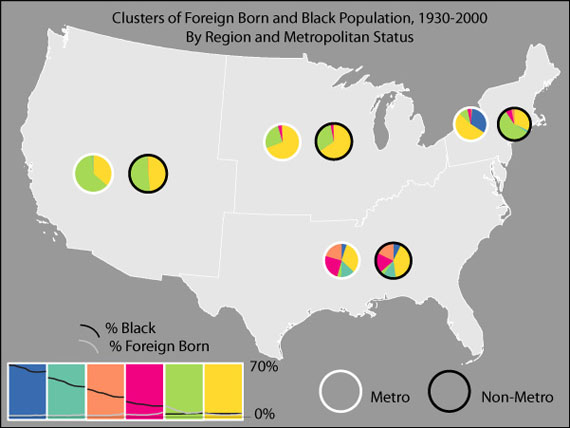Trends in Concentration of Foreign-Born
and African-American Populations

A cluster analysis groups counties with similar trends in percent Black and percent foreign-born over the period 1930 to 2000. The large swaths of yellow throughout the center of the country represent counties where there are not significant populations of either African Americans or immigrants. Shades of blue indicate counties that have populations with high proportions of African Americans, but virtually no immigrants. Shades of pink show counties where there are large populations of African Americans, but they have been declining since the 1930s and in the last decade or so, the immigrant population in those counties has started to grow. These may be the most interesting counties because they represent regions where future convergence of these two populations may be occurring. Counties shaded green are the traditional destinations of immigrants in the earlier part of the study period, but the presence of foreign-born has declined, on average, due to the passing of the previous generation (as discussed on the previous page).

In this map the same cluster analysis is shown, but it has been simplified so that cluster membership is represented by region and metropolitan status. Pie charts represent the percent of counties in each region that belong to each cluster trend. The Northeast and the South have much greater variety in their counties’ experience of Black and foreign-born population change. Interesting patterns that emerge from this representation include the largely non-metro immigration experience of the Northeast in the early part of the study period, and small presence of immigrants but large presence of Blacks in the Northeast’s metro counties. By contrast, immigration in the West had both a metropolitan and non-metropolitan character.
Map color schemes inspired by Color Brewer http://www.personal.psu.edu/cab38/ColorBrewer/ColorBrewer.html